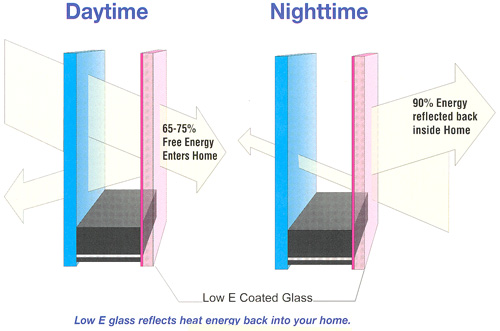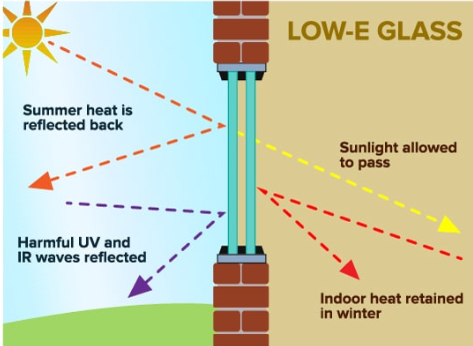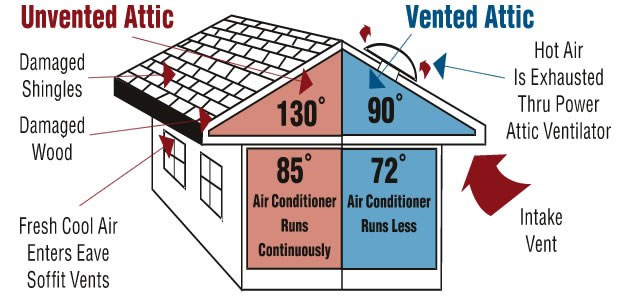IPPS Ltd Environmental Applications for your Efficient House
IPPS Ltd taking action against climate change and tackling CO2 emissions.
Climate change is a reality which is altering the world around us; urgent action needs to be taken now. The construction Industry is a large contributor to CO2 emissions, with buildings responsible for 40% of the total European energy consumption and a third of CO2 emissions.
To help address climate change the European Commission has set specific targets to be achieved by 2020, known as the 2020 targets. Together we want to reduce energy consumption by 20%, reduce CO2 emissions by 20% and provide 20% of the total energy share with renewable energy.
Energy Efficient Windows
Efficient windows and doors from IPPS Ltd reduce your utility bill and add comfort to your home. We’ve designed our products to deliver exceptional energy efficiency for savings and home comfort year-round.
Glass
Low-emissivity (Low-E) glass is a glass coating that improves the energy efficiency of your windows and patio doors. In the winter, Low-E glass reflects heat back into the room, keeping it warmer. In the summer, it reflects heat away from your home, keeping it cooler. Additionally, this glass blocks most of the sun’s harmful UV rays, helping to prevent your carpet, furniture and window treatments from fading.


Air Filtration
Air infiltration in windows and doors is more commonly referred to as leaks and drafts. This happens in areas with gaps, such as between window sashes or between the window frame and the wall. It can happen because of improper installation, poor manufacturing or as a home settles naturally over the years. To help prevent infiltration, proper installation and insulation are key.
Conduction
Conduction is the transmission of heat or cold through a material. In windows and patio doors, conduction occurs when there is a temperature difference on each side of the glass. In the summer, conduction occurs when warm air tries to get into the cool home. In the winter, conduction occurs when cold air leaks into the warm home. Multiple panes of glass and insulating gas, like argon, can help slow the effects of conduction.
Energy Efficient Exterior Doors
The goal of replacing your home elements like the electronics, doors, windows, roof, etc. is to lower down the amounts of energy consumed by them. The ultimate aim is to get the least utility bills. Each element of your house can significantly contribute to this.
A good insulating door keeps the outdoor weather out of your house and prevents unwanted heat exchange. It also prevents air and temperature leak from the house. This means that the amount of energy used to heat or cool your house internally is not wasted if you have energy efficient doors. The best energy efficient doors act as a seal between the temperatures inside and outside the house. Let’s look at some of the best energy efficient doors that are also great in aesthetics.
Fiberglass Exterior Doors
Fiberglass is a poor conductor of heat and electricity. Due to this property, fiberglass doors offer up to almost four times the insulating R-value of the wooden doors. These doors are highly weather resistant which means the rate of heat loss will be minimal.
Vinyl Doors
Vinyl is another energy efficient door material. Vinyl door provides good thermal insulation which blocks external heat or cold air to enter the house. Also, it retains the temperature inside the house. These low maintenance doors are also available in vinyl-cladded wooden options.
Steel Doors
Steel doors are also energy efficient as steel is a good thermal insulator. The only drawback is that it is a good conductor of heat, which means you can feel the coldness or hotness when touching this door.
Wooden Doors
Widely and commonly used wooden doors are poor insulators of heat. They are the least energy efficient doors out of all the materials. They absorb the heat and even cause heat flow.
Most of these doors have a core filled with polyurethane foam that adds to the energy efficiency factor.
Glass and Weatherstripping
If you want your exterior door with glass panes, there are energy efficient options available for the glass too. Glass with a higher low-E coating is energy efficient as they reflect most of the heat outside. Another energy efficiency solution is weatherstripping. Weatherstripping is the application of insulating strips around the door perimeter to avoid air and heat flow. Weatherstripping ensures that absolutely no heat is exchanged and adds an additional barrier to the flow.
Always look for Energy Star rated doors and glass panes for your exterior doors. You can select the material and style on your own, but don’t try to install the door by yourself. Door installation is not a do-it-yourself project. Call our doors and windows expert for any door related services. Right from answering your questions to installing and maintaining your doors and windows, our experts can do everything.
Energy Efficient Roofs
Consider Proper Ventilation and Insulation
Ventilation is a critical part of maintaining the energy efficiency of your roof. A roof that has proper ventilation allows air to circulate through the attic space. There should be vents to let air come into the attic, as well as vents to allow it to exit. Some may think it is strange to insulate an attic to keep it warm and to enable cold air to flow in; however, this combination is what makes your home energy efficient. In the colder winter months, allowing the cooler air to flow naturally into the attic space keeps the attic temperature cooler to reduce the potential for ice damming (snow that melts on the roof from the heat escaping from the attic and refreezing in the gutters of the roof) which is a major cause of roof leaks. The insulation in the attic is meant to keep heat in your home, instead of rising up into the attic. In the warmer summer months, the same natural airflow does the exact opposite – it moves heated air out of the attic to help protect the roof and removes moisture, while the insulation helps to keep the heat from the attic out of your home.

Blocking the airflow at the eaves ( the edges of the roof which overhang the face of a wall and, normally, project beyond the side of a building) is one of the most common mistakes made by homeowners. To allow for proper ventilation and natural airflow, be sure never to cover the soffit vents with insulation in your home.
Things to Know
As a homeowner, you can apply for a tax credit if you have a metal or asphalt roof with pigmented coatings or cooling granules designed to reduce heat gain.
Cool roofs are lighter in color than traditional black asphalt shingles and help to save energy by reflecting light and heat instead of absorbing them.
Ask the Experts
Choosing the most energy-efficient roof, and the one which is ideal for your home or office building, can best be handled by consulting with the roofing experts at HomeGuard Roofing & Restoration. With more than 50 combined years in the roofing business, the professionals at HomeGuard can recommend the absolute best roofing option for you. Contact us IPPS Ltd today with any inquiries you may have, or to schedule a consultation at your home or office.
Rain Water Harvesting
Financial returns
A properly designed Rain Harvesting system can supply some or all of your household water needs, offering significant cost savings and a clear return on investment.

To estimate this return, simply compare your ongoing water costs with the once-off costs associated with setting up your system. In most cases, it won’t be long before you begin to make a return on your investment.
Firefighting supply
Stored rainwater can provide vital water for firefighting. However, it’s important to ensure you have adequate water available.
For properties under 1,000 square metres in size, IPPS Ltd recommends having 5,000 litres of rainwater available for firefighting. Lots up to 10,000 square metres should


have at least 10,000 litres. Larger lots should have at least 20,000 litres. To meet these needs, you may need to install more than one tank on your property.
Environmental Benefits of LEDs (Light Emitting Diodes)

Lifetime
As solid-state light sources, LEDs have very long lifetimes and are generally very robust. While incandescent bulbs may have an expected lifetime (to failure) of 1000 hours, LEDs are often quoted of having a lifetime of up to 50,000 hours.
Low maintenance
The long lifetime of LEDs reduces the need to replace failed lamps, and this can lead to significant savings, particularly in the cost of sending out maintenance crews. This also makes LED fixtures useful for installation in relatively inaccessible locations.
Efficiency
LEDs are high-efficiency light sources. White LEDs with efficacies of 25 lm/W and up are commercially available, exceeding the performance of incandescent and some fluorescent sources.
Low power consumption
The low power consumption of LEDs leads to significant energy savings that can often drive the installation of LED-based systems, for example traffic signals. National programs to develop effective solid-state lighting industries in the EU and Japan have been driven by the potential energy savings associated with using LEDs.
Insulate your home
Insulation acts as a barrier to heat flow and is essential for keeping your home warm in winter and cool in summer. A well-insulated and well-designed home provides year-round comfort, cutting cooling and heating bills by up to half. This, in turn, reduces greenhouse gas emissions.
Climatic conditions influence the appropriate level and type of insulation. Establish whether the insulation is predominantly needed to keep heat out or in (or both). Insulation must cater for seasonal as well as daily variations in temperature (see ‘Insulation levels for your climate’ below).


Bulk insulation
Resists the transfer of conducted and convected heat, relying on pockets of trapped air within its structure. Its thermal resistance is essentially the same regardless of the direction of heat flow through it.
Bulk insulation includes materials such as glass wool, wool, cellulose fibre, polyester and polystyrene. All bulk insulation products come with one material R-value for a given thickness.

IPPS Ltd uses the best materials and products to minimize any environmental impact. IPPS Ltd has the technology and know-how.







